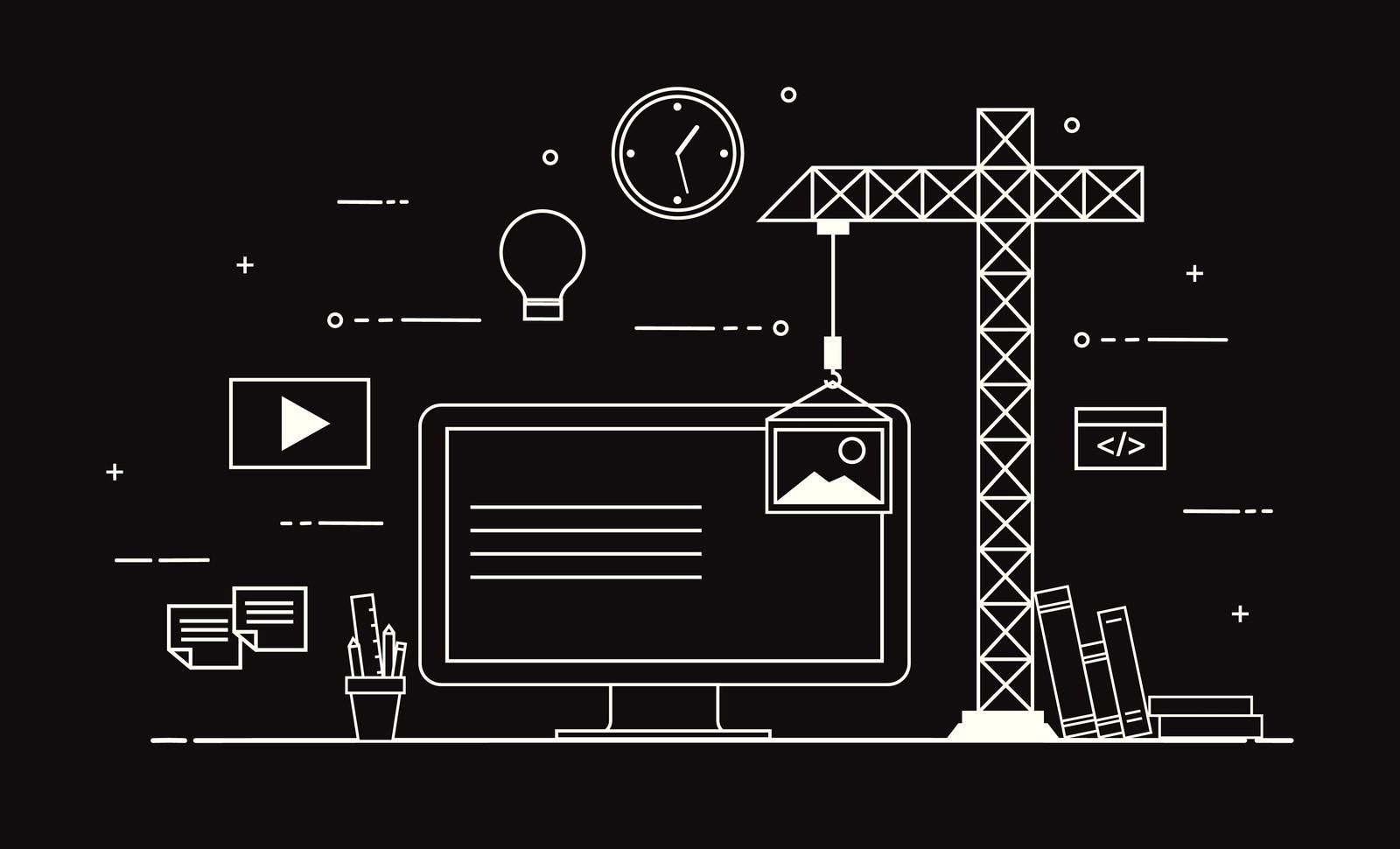Cascading Style Sheets (CSS) remain a foundational pillar, enabling developers and designers to craft visually compelling and highly functional websites. Staying abreast of the latest CSS trends is not just beneficial—it's essential for anyone looking to make their mark in web development.
Since its inception, CSS has undergone significant transformations, each iteration introducing new capabilities and efficiencies that have dramatically altered the way we approach web design. From static, table-based layouts to dynamic, responsive designs that adapt seamlessly across devices, the evolution of CSS has been instrumental in pushing the boundaries of what is possible on the web.
CSS Trends Influence on Web Design
The landscape of web design and development is constantly influenced by emerging CSS trends, which serve as a beacon, guiding the aesthetic and functional evolution of websites. These trends not only enhance the visual appeal and interactivity of web pages but also address the growing need for websites to be responsive, accessible, and efficient. By staying in tune with these trends, developers and designers can ensure their projects remain cutting-edge and user-friendly.
Rise of CSS Grid
CSS Grid is a revolutionary layout system that provides an efficient way to create complex and responsive web layouts. It represents a significant leap forward from traditional layout techniques, offering a grid-based layout system that is both powerful and easy to use.
With CSS Grid, developers can define columns and rows in their layout, place items within this grid, and create layouts that were difficult or impossible with older CSS methods.
Benefits of CSS Grid:
- CSS Grid simplifies the process of creating intricate layouts, making it easier to design and maintain responsive websites.
- It offers unmatched flexibility, allowing for precise placement and alignment of content, regardless of the screen size.
- Grids can be easily adjusted for different screen sizes, ensuring a consistent user experience across devices.
Examples in Modern Web Design:
- CSS Grid is perfect for creating complex magazine-style layouts, with content spanning different columns and rows.
- It allows for the creation of dynamic photo galleries, where images can be easily arranged in an aesthetically pleasing manner.
- Many web applications utilize CSS Grid to layout various components of the user interface in a clean and organized way.
Embracing Custom Properties (CSS Variables)
Custom properties, or CSS Variables, are a powerful feature in CSS that allows developers to store specific values for reuse throughout a document. This innovation introduces a new level of dynamism and reusability in CSS, enabling more streamlined and maintainable codebases.
Advantages of Custom Properties:
- By defining a value once and referencing it across the stylesheet, changes can be made quickly and consistently.
- They offer the flexibility to theme and modify the appearance of websites dynamically, making it easier to implement design changes.
- Custom properties make it easier to scale styles across large projects, reducing repetition and enhancing readability.
Custom Properties in Action:
- They are extensively used for creating dark/light mode features on websites, allowing colours and themes to be switched seamlessly.
- CSS Variables work hand in hand with media queries to adjust styles based on viewport sizes, enhancing the responsiveness of web pages.
Responsive Design with CSS
Responsive design is a cornerstone of modern web development, ensuring that websites look great and function well on any device. CSS plays a crucial role in implementing responsive design, with features like media queries and new units (vw, vh, etc.) leading the charge.
Key Features for Responsive Design:
- Allow styles to be conditionally applied based on the device's characteristics, such as its width, height, or orientation.
- Units like vw (viewport width) and vh (viewport height) enable sizing elements relative to the size of the viewport, contributing to more fluid and adaptable layouts.
Responsive Design in Practice:
- Using CSS Grid in conjunction with viewport units and media queries allows for the creation of grids that adapt fluidly across different screen sizes.
- CSS enables text to adjust size based on the viewport dimensions, improving readability on mobile devices.
Developers and designers can create websites that are not only aesthetically pleasing but also highly functional and adaptable to the user's device, ensuring a superior web experience.
Latest CSS Features
The continuous evolution of CSS is pivotal in enhancing the capabilities of web design and development, introducing features that enable more dynamic, interactive, and sophisticated web experiences. Recent updates to CSS standards have ushered in a new era of design possibilities, making it easier for developers to create complex layouts and effects that were once only feasible with JavaScript or other technologies.
Subgrid
Subgrid is an extension of the CSS Grid layout model that allows grid items to participate as grid containers themselves. This means that elements within a grid item can align themselves according to the grid defined by their parent, creating a more consistent and coherent layout with less effort.
Benefits for Web Developers:
- Subgrid simplifies the process of aligning items across nested grids, ensuring a more uniform appearance without complex calculations or alignments.
- By reducing the need for auxiliary wrapper elements and redundant code, Subgrid makes CSS more maintainable and concise.
- Developers can achieve more complex layouts with fewer constraints, allowing for creative design solutions that adapt seamlessly across different screen sizes.
Potential Uses:
- Subgrid is ideal for intricate magazine-style layouts where alignment between text, images, and other media across columns is crucial.
- Creating responsive data tables that align perfectly across rows and columns becomes significantly easier with Subgrid.
- Designing complex UI components, such as dashboards and menus, is more straightforward, enabling consistent alignment across nested elements.
CSS Houdini
CSS Houdini is a set of low-level APIs that expose parts of the CSS engine, allowing developers to create custom CSS properties and values, paint worklets, layout worklets, and more. This collection of APIs essentially gives developers the "magic" to extend the capabilities of CSS, empowering them to create high-performance animations and layouts that were previously difficult or impossible.
Advantages of CSS Houdini:
- Developers can define their own CSS properties, giving them unprecedented control over the styling and behaviour of their web elements.
- By enabling more work to be done by the browser's CSS engine, Houdini can improve the performance of complex animations and effects.
- Houdini opens the door for innovative design patterns and visual effects, pushing the boundaries of what can be achieved with CSS alone.
Creating Customized User Experiences:
- With Houdini's paint API, developers can create complex visual effects that are rendered efficiently by the browser.
- The layout API allows for the creation of custom layout modes that go beyond the capabilities of Flexbox and Grid.
- Animations can be more deeply integrated with the layout and painting stages of the CSS rendering process, resulting in smoother and more complex animations.
These latest CSS features reflect the ongoing efforts to enhance the web's visual capabilities and the efficiency of web development workflows. Subgrid and CSS Houdini, in particular, are game-changers, offering developers the tools to create highly responsive, efficient, and visually striking web experiences that were once beyond reach.
Future Trends in CSS
The future of CSS promises to bring even more innovative features and methodologies. These developments are set to further redefine how we design and interact with websites, making the web more adaptive, intelligent, and engaging. The integration of AI and machine learning, alongside advancements in CSS capabilities, are poised to dramatically change the landscape of web design and development.
Integrating AI and Machine Learning
The role of AI and machine learning in web development is rapidly expanding, offering the potential to automate and optimize many aspects of design and user experience. In the context of CSS, these technologies could lead to smarter design systems that adapt in real-time to user behaviors and environmental factors.
Predicted Developments:
- AI could analyze user interaction patterns to automatically adjust CSS properties for improved usability and accessibility.
- Machine learning algorithms could suggest optimal design adjustments based on user engagement metrics, reducing the time spent on A/B testing.
- AI-driven CSS could dynamically alter layouts and content presentation in response to user preferences and behaviours, creating a more personalized web experience.
CSS and Modern Web Applications
As web applications continue to evolve, becoming more complex and feature-rich, CSS is adapting to meet these new challenges. The need for CSS to handle dynamic content, state changes, and interactive elements efficiently is more critical than ever.
Adaptations for Modern Web Applications:
- We can expect CSS to introduce more features that facilitate the creation of interactive elements without relying heavily on JavaScript. This could include expanded pseudo-classes and properties that respond to user interactions.
- Future CSS developments are likely to focus on performance optimizations, especially for mobile devices and low-bandwidth environments. This could involve more efficient rendering techniques and the ability to prioritize critical CSS.
- As web applications strive for greater accessibility and semantic clarity, CSS may offer more tools for semantic styling, aligning visual design more closely with the structure and meaning of content.
The Future of Layouts and Design
The evolution of CSS Grid and Flexbox has already changed how we approach web layouts. Looking forward, we can anticipate further enhancements that make layouts even more flexible and intuitive.
Emerging Trends:
- The long-awaited feature of container queries would allow for more responsive designs that adapt not just to the viewport, but to the size of the container element, enabling truly modular design components.
- Continued integration and optimization of variable fonts in CSS will allow for more dynamic typography that can adjust in real-time to the layout and design of the page.
- As web standards evolve, CSS is expected to incorporate more advanced tools for creating motion designs, including complex animations and transitions that respond to user inputs and environmental conditions.
Moving Forward with CSS Trends
The dynamic nature of CSS, with its continual evolution and introduction of innovative features, underscores the critical importance of staying abreast of the latest trends in web development. As we've explored, recent advancements like CSS Grid, custom properties, and the potential of CSS Houdini, alongside the promising future of AI integration and new layout capabilities, are not just enhancing the aesthetic and functional aspects of web design but are also setting new standards for user interaction and engagement.
Embracing these developments is essential for any web professional looking to deliver cutting-edge web experiences. Experimentation and adaptation are key. By integrating the latest CSS features into your projects, you not only elevate the quality of your work but also gain invaluable insights into the possibilities and challenges of modern web design. This proactive approach ensures that your skills remain relevant and competitive in a rapidly changing digital landscape.
The journey of discovering and applying new CSS techniques is an opportunity for growth and innovation. It invites creativity and problem-solving, pushing the boundaries of what we can achieve with web technologies. Whether it's creating more responsive layouts with Subgrid, implementing dynamic design adjustments with custom properties, or exploring the untapped potential of CSS Houdini, there's a wealth of possibilities waiting to be explored.
The evolution of CSS is a testament to the vibrant and forward-thinking community of web developers and designers. By staying informed about CSS trends and fearlessly experimenting with new features, you contribute to this ongoing narrative of progress and innovation. Let's continue to push the envelope, creating web experiences that are not only visually stunning and highly functional but also accessible and user-centric.




